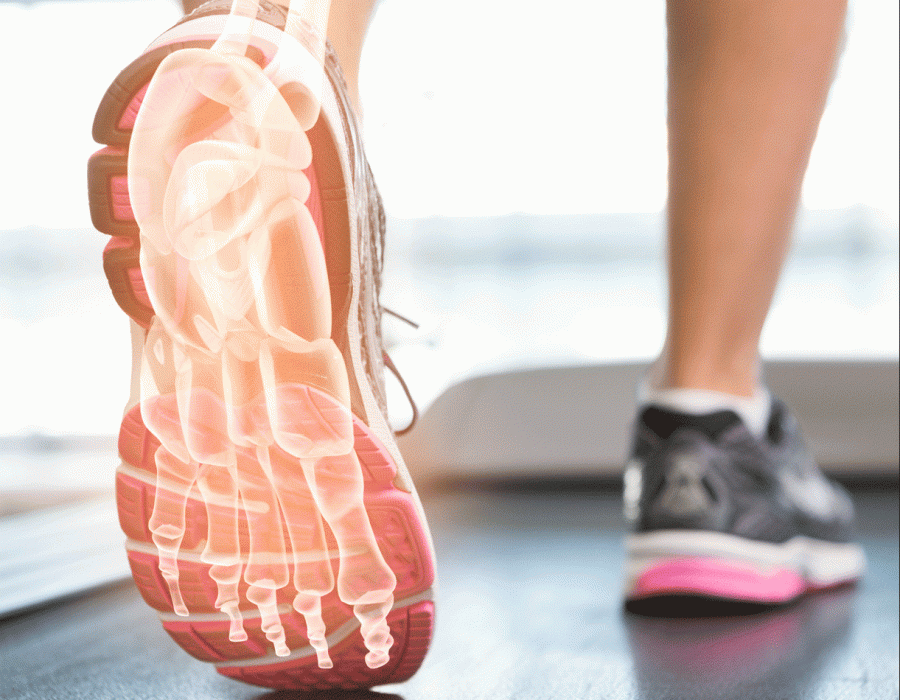Fitness and Performance
Why do I get pain on top of foot when walking or running?

Following on from her blog post about flat feet, Bodyset’s physiotherapist Gbemi is back. Today she’s looking at why we sometimes experience pain in the top of the foot, and how this can be treated.
Foot pain
One of the most unusual places to get pain in the body is in the foot. In comparison to other body parts like the heart, brain and eyes, we spend a lot less time and energy on foot care. Have you ever experienced foot pain? Especially when you walk?
Symptoms
Depending on the cause of the foot pain, the symptoms you experience may vary. They include:
- Ankle pain
- Stiffness and instability
- Weakness in the foot
- A gradual increase in pain at the front of the ankle which is worse after rest
What causes the pain?
There are several factors which impact how and why you might develop foot pain:
- Your age
- Gender
- Serious degenerative conditions
- The type and fit of your footwear
Recent research suggests that women may be more prone to develop this pain than men. One reason for this may be because of the type and variety of footwear women have.
Other serious reasons for pain in the top of your foot include:
- Problems with the bones – stress fractures in the ankle or hammer or toe claw
- Issues with soft tissues – extensor tendonitis or tibialis anterior tendonitis
- Medical conditions – athletes foot or gout
How can I manage the pain?
There are a few simple steps you can take to manage your pain. If you start to experience pain try these techniques:
- Rest (after activity)
- Ice
- Pain medication – anti-inflammatories
- Elevation
- Gentle exercises and stretching
How can physiotherapy help?
If your pain or discomfort continues, becomes worse or you re-injure yourself it is important to seek further help. Your Chartered Physiotherapist at Capital Physio is always happy to give you bespoke guidance and answer all your questions.
Your physiotherapist will conduct a comprehensive assessment and consider the timeline of your pain, its symptoms and progression. They will then prescribe a plan of treatment. This may include manual therapy, acupuncture, orthotics or advise the use of crutches.